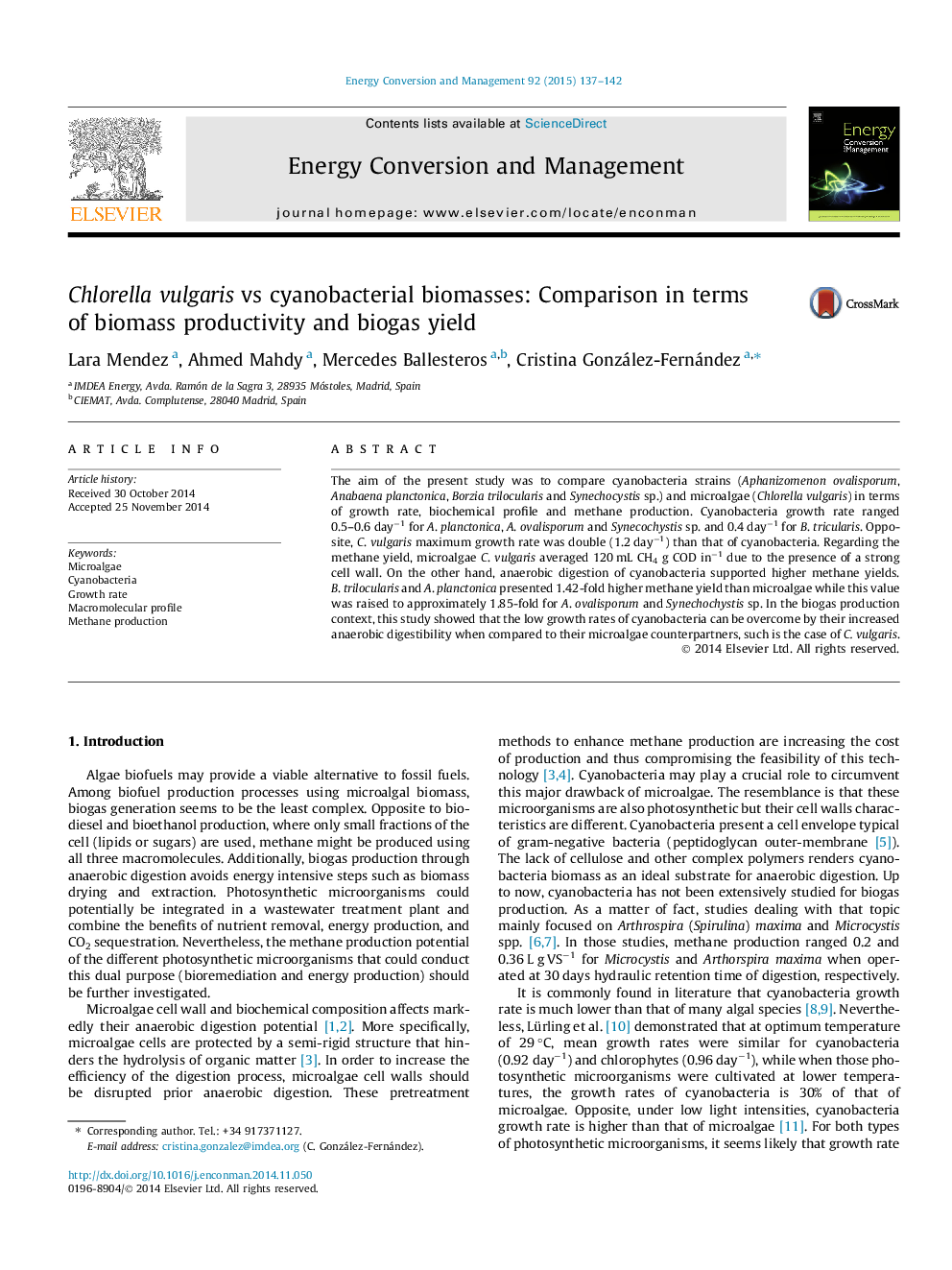| Article ID | Journal | Published Year | Pages | File Type |
|---|---|---|---|---|
| 7163160 | Energy Conversion and Management | 2015 | 6 Pages |
Abstract
The aim of the present study was to compare cyanobacteria strains (Aphanizomenon ovalisporum, Anabaena planctonica, Borzia trilocularis and Synechocystis sp.) and microalgae (Chlorella vulgaris) in terms of growth rate, biochemical profile and methane production. Cyanobacteria growth rate ranged 0.5-0.6Â dayâ1 for A. planctonica, A. ovalisporum and Synecochystis sp. and 0.4Â dayâ1 for B. tricularis. Opposite, C. vulgaris maximum growth rate was double (1.2Â dayâ1) than that of cyanobacteria. Regarding the methane yield, microalgae C. vulgaris averaged 120Â mL CH4 g COD inâ1 due to the presence of a strong cell wall. On the other hand, anaerobic digestion of cyanobacteria supported higher methane yields. B. trilocularis and A. planctonica presented 1.42-fold higher methane yield than microalgae while this value was raised to approximately 1.85-fold for A. ovalisporum and Synechochystis sp. In the biogas production context, this study showed that the low growth rates of cyanobacteria can be overcome by their increased anaerobic digestibility when compared to their microalgae counterpartners, such is the case of C. vulgaris.
Related Topics
Physical Sciences and Engineering
Energy
Energy (General)
Authors
Lara Mendez, Ahmed Mahdy, Mercedes Ballesteros, Cristina González-Fernández,
